With slick modern soundbars promising cinematic audio immersion, can you enjoy room-filling home theater sound completely free of power cords?
While a few high-end soundbars now integrate custom batteries for temporary untethered use, most consumer models require reliable wired AC power connectivity to deliver the performance and longevity buyers expect.
Let’s explore what powers soundbars, whether outlets or batteries, and the tradeoffs of both approaches when upgrading home entertainment systems.
Soundbars Predominantly Rely on Wired Power Connectivity
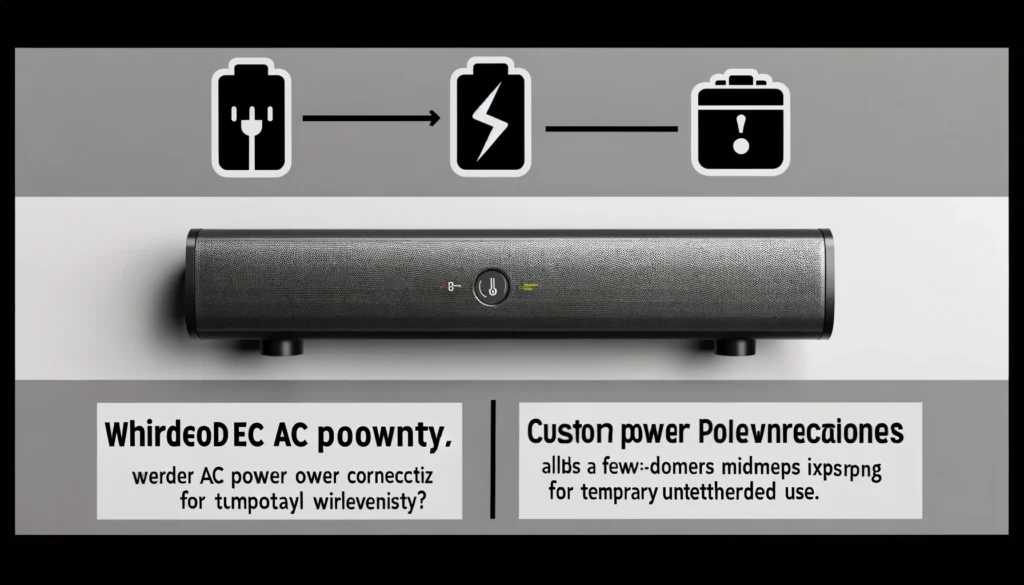
The vast majority of consumer soundbars, from budget models to flagship offerings, require ongoing power cords connection to AC wall outlets in homes in order to operate.
They lack sufficiently large internal batteries to meaningfully drive wireless operation off a charge.
While a few niche soundbars integrate custom batteries for temporary untethered usefulness, continuous wired electricity overwhelmingly powers soundbar functionality for most buyers.
We’ll explore the performance and practical reasons behind this reality below.
Power Source Options for Soundbars
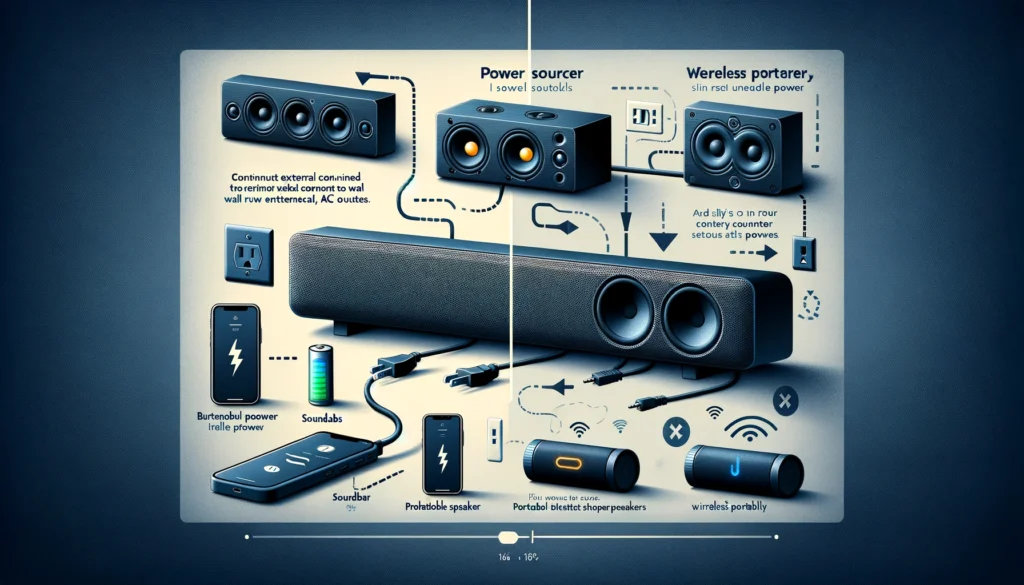
The vast majority of soundbars available for purchase require an electrical connection to wall power AC outlets in order to operate.
They rely on being plugged into continuous external power sources rather than having batteries built into their enclosures to enable wireless portability or untethered functionality away from wall outlets.
This contrasts with portable Bluetooth speakers which contain internal rechargeable batteries and can run solely off battery power for extensive periods while being used away from charging sources.
While a few niche high-end soundbars may incorporate custom battery solutions to technically allow brief spurts of wireless operation.
The standard out-of-the-box experience for consumers involves connecting a supplied AC power adapter from the soundbar into available wall outlets in their homes.
Without this steady delivery of electricity into the system, the soundbars remain inert and non-functional.
Wall Power Connectivity Provides Continuous Usable Lifespan

The predominant reason most soundbar manufacturers rely on continuous AC wall power delivery rather than internal batteries mostly relates to operational lifespan expectations.
Consumers expect home theater products like soundbars to remain usable for many years without significant functional decline or need to repair and replace depleted power cells.
Constant connection to effectively unlimited wall outlet electrical supplies guarantees buyers can use their soundbars as long as they wish. Rechargeable batteries degrade measurably over just a few years before needing replacement.
An integrated solution would saddle owners faced with paying for new custom battery packs well before the other soundbar components actually wear out.
This imposes unnecessary costs and complexity compared to just utilizing wall outlets already available in homes.
Wired Connectivity Also Enables Stable Peak Performance
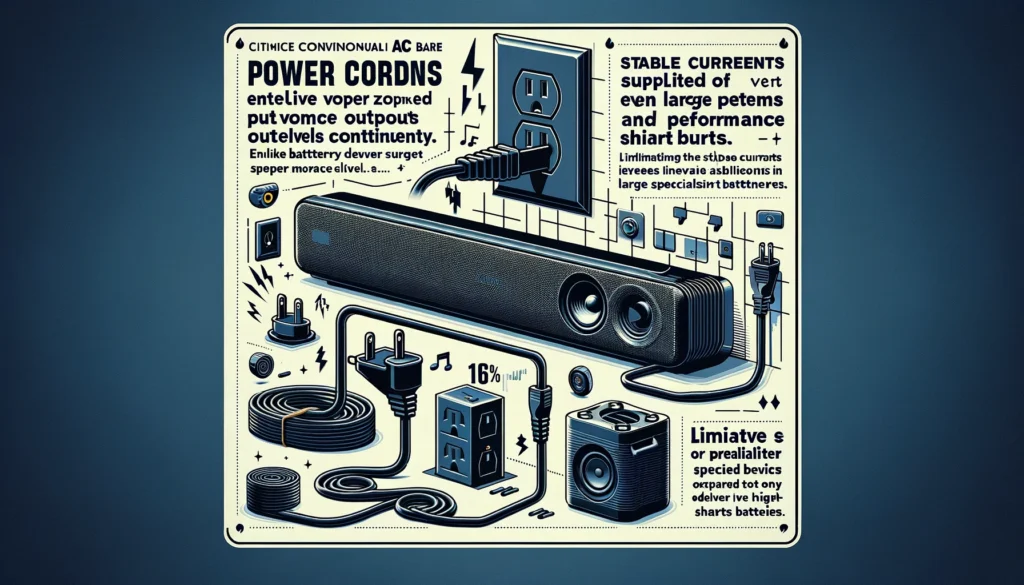
In addition to elongating practical lifespans virtually indefinitely, conventional AC power cords also ensure soundbars can deliver optimized peak volume outputs and performance levels continuously rather than in short bursts.
Even large specialist batteries custom-designed to deliver ample capacities for electronics applications still pale in comparison to the stable currents supplied by wall outlets.
Battery-powered devices often throttle power delivery to various components as available charges deplete during use in order to preserve bare minimum operating thresholds.
This directly translates into noticeable dimming of maximum volume over time or degraded driver excursion capabilities altering sonic properties once batteries pass certain points. Only steady wall AC electricity allows electronics to remain totally optimized.
Wireless Capabilities Remain Limited Despite Some Improvements
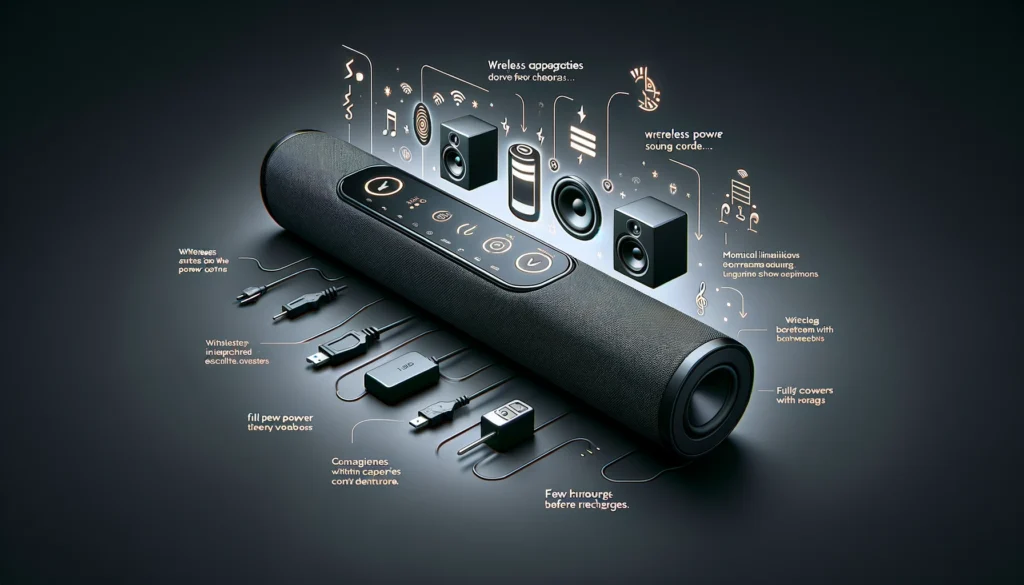
A few premium soundbars from niche manufacturers now feature integrated batteries in conjunction with standard AC connectivity to wall outlets.
These may allow practical wireless operation away from wall outlets for a few hours based on battery size and output demands before requiring recharges.
But capacities remain quite modest still compared to needs – especially for full surround systems with external subwoofers driving significant power draws.
Consumers should not expect more than very temporary untethered functionality in limited scenarios like backyard usage or room-to-room transfers between wall outlets.
Passive battery-reliant operation cannot yet substitute meaningfully for existing wired connections to homes’ electrical infrastructure if owners want continuous daily soundbar availability. Wireless capabilities therefore remain supplemental at best currently.
Power Consumption Varies Among Soundbar Models
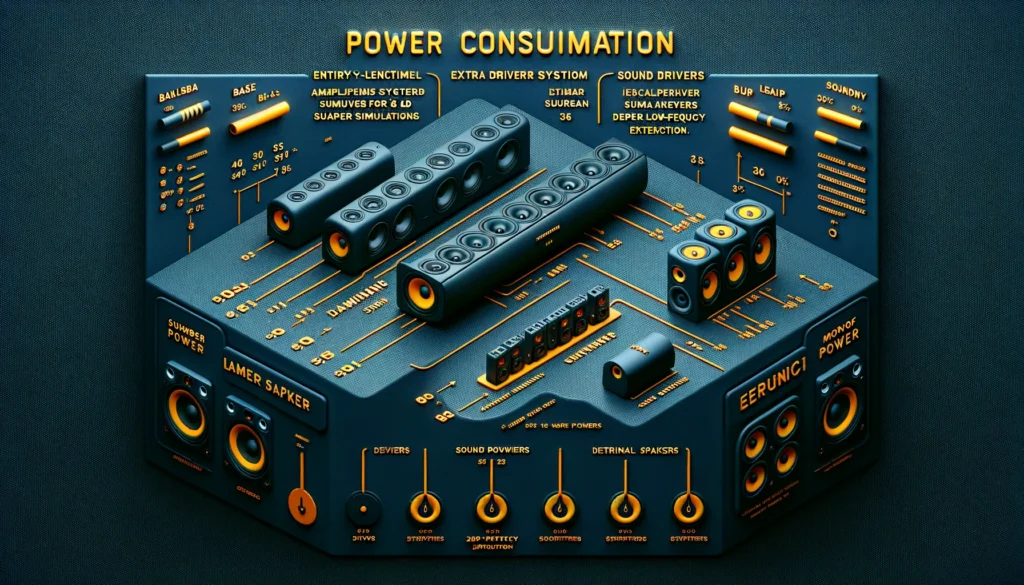
Soundbars consume differing amounts of electricity based on included amplification systems and number of internal speakers comprising their designs.
Entry-level models with just two or three basic drivers in a minimalist architecture may sip just 10-20 watts during regular operation. Adding extra driver elements for 3D surround simulation and deeper low-frequency extension dramatically increases power draw.
Flagship soundbars can utilize up to 200+ watts momentarily to enable thunderous cinematic effects and reference-grade volumes.
Comparatively, home theater receivers driving multi-speaker setups often demand 500+ watts or more under load. So while not outrageously inefficient, soundbars do still necessitate levels of electrical supply only deliverable via wall outlets realistically.
Their compactness simply limits feasible built-in battery sizes presently.
Ongoing Size Constraints Prevent Fully Wireless All-In-One Soundbars
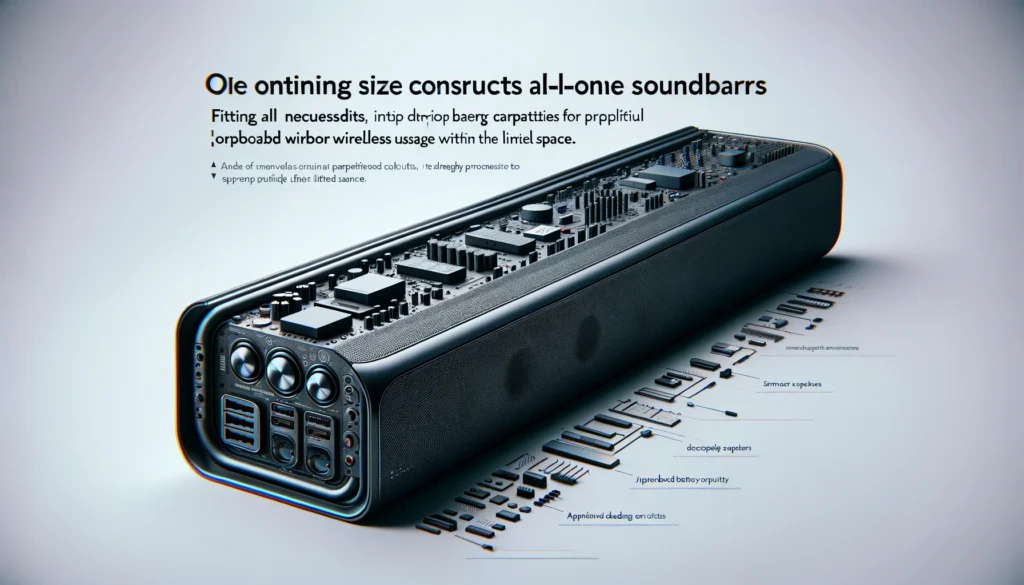
Incorporating amplification, decoding circuits, multiple speakers covering different frequency ranges, and input/output connectivity in elegantly slender soundbar enclosures already pushes dimensional limits for home integration.
Finding room to further squeeze appreciable onboard battery capacities for practical real-world wireless usage remains highly problematic for engineers given consumer expectations regarding size.
Absent major leaps in battery innovations delivering 3-5x increased capacities without ballooning packaging – likely years away still – even flagship soundbars cannot yet fulfill demands for long playlists or movies without eventual recharging needs.
Significant wired elements enable the expansive sonic ranges buyers expect while maintaining aesthetically modest footprints. Some wireless freedom emerges but with limits still. Interior volumes dictate power realities.
Proprietary Battery Solutions Enable Niche Wireless Products

While mainstream soundbar makers seeking mass-market appeal remain constrained by current battery and size limitations, a few niche players leverage custom engineering to deliver specialty models focused purely on wireless functionality.
Very expensive proprietary battery formulations and amplifier modules purpose-built for sound allow this differentiated positioning.
But the tradeoff is astronomical pricing topping thousands beyond comparable wired soundbars due to these costly customizations.
And battery lifespan remains shorter than AC-powered systems since cells degrade while other components may operate indefinitely.
For most buyers, wires enable the performance and longevity they expect at far more reasonable pricing. But the wireless-obsessed have cutting-edge options if cost is no concern.
Conclusion
In conclusion, the vast majority of soundbars require continuous connection to wall outlet power to operate, with only a handful of specialty models having built-in batteries for limited wireless duration.
Wired electricity enables optimal, consistent performance.
